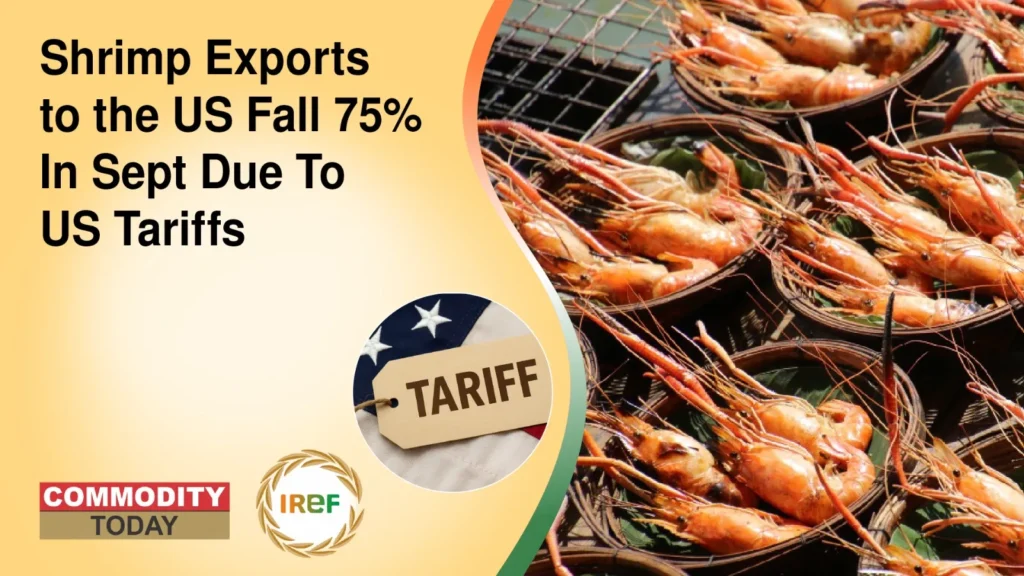Amid the imposition of US tariffs, exporters reported that Shrimp exports to the US around a 75% year-on-year decline in shipments in September.However, the country’s data for September is not available. A decrease in marine products exports to the US, which had a 35% share, is anticipated to pull down overall shipments in FY26. The GTRI data stated that India’s exports of fish, crustaceans increased to $ 2.7 billion, an up of nearly 15% on year, whereas shipments to the US increased by only 2.7% to $ 859 million, signaling a slowdown in exports because of tariffs.
Effect of the Imposition of US Tariffs on India’s Seafood Exports
Apparently, on August 7, the Trump-led administration announced a 25% tariff on Indian goods. Notably, there were only 10% anti-dumping and countervailing duties imposed on India’s exports to the US before the imposition of US tariffs. India’s seafood exports, mostly frozen shrimp, stood at $ 7.45 billion or Rs 62,408 crore in FY25, with the United States having a share of 35% ($ 2.8 billion). Interestingly, the commerce ministry estimated marine products exports rose by 17% to $ 3.97 billion year on year during April-September 2025-26.
Firm Crisil Ratings stated that India’s Shrimp Exports are anticipated to reduce by 15%-18% in the current fiscal year. According to Industry officials, the seafood exports have been hit hard as effective duties imposed by the US have been increased to 59.71% which includes countervailing (5.76%) and anti-dumping duties (3.96%), along with a 50% US tariffs declared for India by the Trump-led administration. Massive country’s seafood exports to the US is Vannamei Shrimp. Ecuador had 19% of the USA’s annual seafood import of $ 6 billion.
Undoubtedly, US tariffs have put Indian seafood at a significant disadvantage in comparison to competitors like Ecuador (15%), Vietnam (20%), and Thailand (19%). To offset these losses, Indian seafood exporters are exploring alternative markets such as Australia, the European Union (EU), Southeast Middle East regions.
Read Latest News
- Agricultural Drones And Training To Empower Rural Youth In India
- Cambodia’s Agricultural Exports Surpass 11 Million Tonnes in First 10 Months of 2025
- India’s Palm Oil Imports Fall Amid Rising Soybean Oil Imports
- IRRI, UP Govt Sign MoU For Climate-Resilient Rice Systems
- Govt Announces New Export Schemes To Support Exporters Amid High US Tariffs



